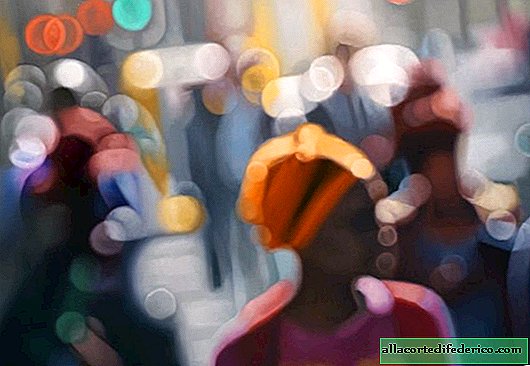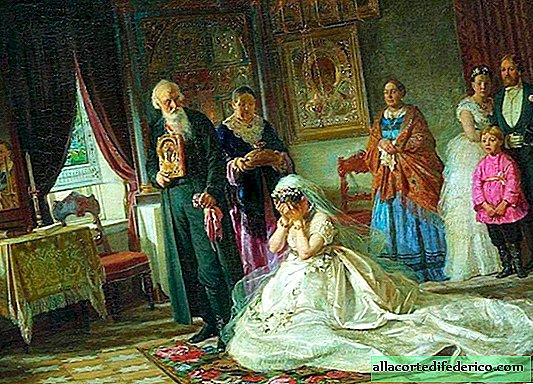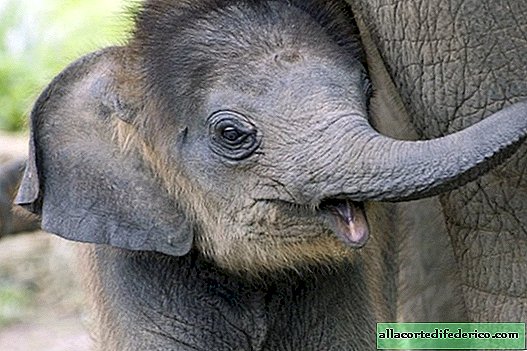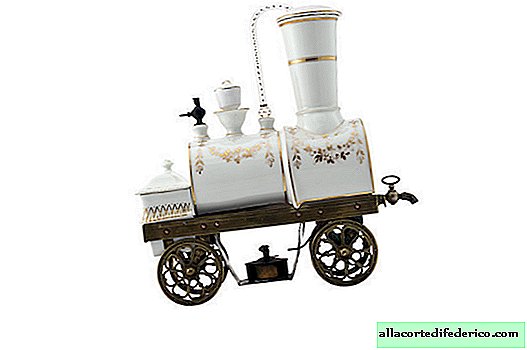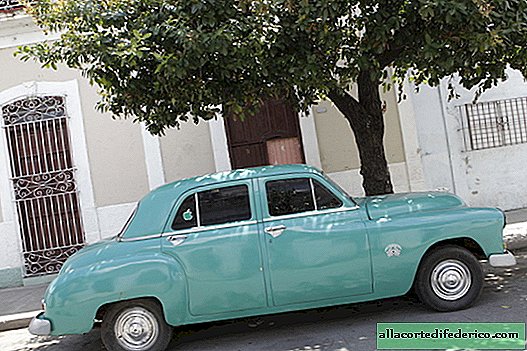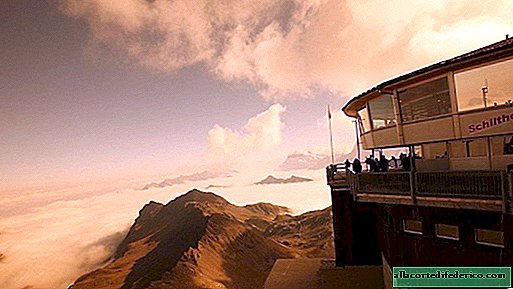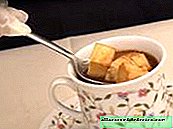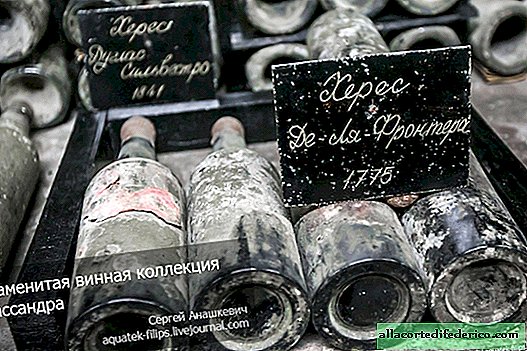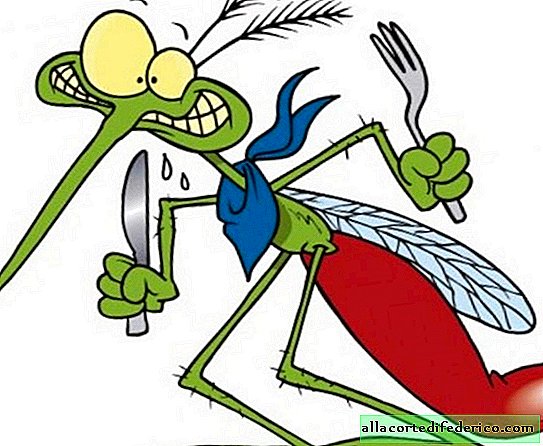What did the working sketches for Soviet cartoons look like?
For more than 80 years, Soyuzmultfilm animated studio has pleased us with its creations. The characters she gifted are familiar to us from the cradle. We all grew up on these cartoons. We waited for them every day in "Good Nights", emphasized in the programs, so as not to miss on vacation or weekend.
Do you want to see how the sketches for the most popular cartoons of those years looked like?
"Three from Prostokvashino"
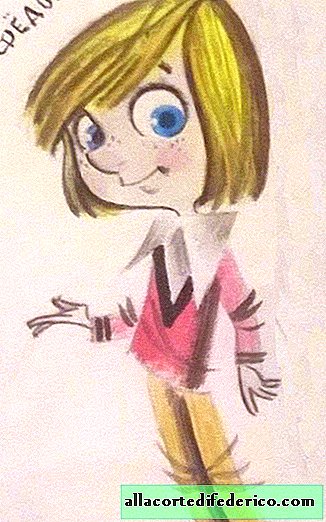

And here is what the storyboard for the movie looked like:

In the second and third parts, Uncle Fedor and his friends were painted by Arkady Sher, an artist who worked with Vladimir Popov on his best films. Cher said that he would like to make the characters completely different, but could not go far from the first cartoon.

"Wait for it!"
A shaggy guy with a guitar in his back, flared pants and shirt, and a small but cunning dirty guy. Wolf and Hare. The best animated duet in the history of Soyuzmultfilm.

“I immediately got a hare,” said Vyacheslav Kotyonochkin, “with blue eyes, pink cheeks, in general, very positive.”
"And Wolf didn’t succeed for a long time. Then on the street I saw a guy leaning against the wall of the house. He had long black hair, a cigarette stuck to his thick lips, his tummy fell out, and I realized that this was what Wolf should have been."

Kotyonochkin wanted the Wolf to be voiced by Vysotsky, and tried his voice with a hoarse voice. But it didn’t work out. As a hello to Vysotsky in the first episode, the Wolf whistles the tune of the song “Vertical” (“If a friend suddenly appeared ...”) when he climbs a rope to the Hare.

“None of the creators of“ Well, wait a minute! ”Did not think that the cartoon would become so popular,” said Alexander Kurlyandsky. “We, the authors of the first issue - Kamov, Haight and I, all the time, wondered which series it would all end in: on the third, on the fifth, on the seventh? Then, Soyuzmultfilm began to receive bags of letters from the children asking them to continue. I especially remember one letter in which the child asked Kotenochkin to shoot “Well, wait a minute!” endlessly.
"38 parrots"

Director Ivan Ufimtsev in the fairy tale "38 Parrots", which the writer Grigory Oster brought to the Soyuzmultfilm studio, caught the dialogue between Monkey and Udava: "Where are you crawling?" - "Here, crawl here."

The characters were developed by the artist Leonid Shvartsman, who later admitted that he worked on the Boa for the longest time: he went to the zoo, painted snakes that were unpleasant for him and spent hours trying to give them human features. The keys to success were freckles, raised eyebrows and an elongated head. Daisies were added to the Boa's scales so that children would not be so afraid of him.
"The Bremen Town Musicians"

... and the Princesses.

In draft version, all the characters in the cartoon looked more than decent. Princess in lush lace, Troubadour in a jester's cap, elaborate palace chambers. But this did not suit the director. In her opinion, they were completely in tune with either the music or the genre of the film. Members of the art council were also surprisingly unanimous in the opinion that these characters do not fit the script, and especially the music.
As a result, the image of Troubadour was taken from some foreign magazine.

In the same magazine, the director spied and a girl in a short red dress, decided to make the Princess out of her. Although Yuri Entin claims that the prototype of the image of the princess was his wife Marina and her red dress. "The very red dress that you see in the cartoon, I bought Marina for 40 rubles. She was in it at the wedding. And Gladkov and Livanov were our witnesses."

"Winnie the Pooh"
Director Fyodor Khitruk, before creating his Winnie the Pooh in 1969, did not see the famous Disney version, released three years earlier, and used only Alan Milne's book as material. Khitruk deliberately refused the owner of the bear cub Christopher Robin. The presence of the boy emphasized the toyishness of the other inhabitants of the forest.
But the bear’s characteristic walk, amble (where the left leg moves, the left arm moves there) is an accident, the result of a cartoon mistake that gave the character additional charm.

Soviet officials refused to buy the rights to the film adaptation of Milne’s book, which made the Soviet “Winnie the Pooh” restricted to travel abroad. He could not get to any festival of the world.

"Cheburashka and the Crocodile Gene"
Once the director Roman Kachanov visiting the screenwriter Ajubey saw that the children were reading the book enthusiastically. It was the "Crocodile Gene and his friends" Ouspensky. The next day, he bought the same book in the store, brought it to Soyuzmultfilm, and said: “That's it, we make a movie about it.”

Here's how Leonid Shvartsman talks about the creation process: “I got the crocodile pretty quickly. It was written in the script:“ The crocodile worked in the zoo as a crocodile. And when the working day ended and the bell rang, he put on his jacket, hat, picked up the phone and went home. "That was enough for me to have the image of a gentleman with a bow-tie and a white shirt shirt."

With Shapoklyak, too, everything turned out simply. Shapoklyak is, as you know, the name of a folding cylinder. This is the 19th century, and everything else went from here: a black strict dress, a frill, white lace cuffs, high-heeled pumps. Since she is such a prudent grandmother, Schwartzman made her a long nose, pinkish cheeks and a prominent chin. And he borrowed gray hair and a bun from his mother-in-law.

“Five months is the preparatory period for the film, and I spent half of this time with Cheburashka.” Leonid Shvartsman continues. “His eyes were immediately made on children’s eyes, surprised, human. Though big, but not like an owl’s.” Uspensky’s in the “preface, which is not necessary to read,” it says: “When I was little, my parents gave me a toy: fluffy, shaggy, small. With big eyes, like an owl. With a round hare head and a small tail, like a bear. "That's all. Not a word about big ears.
I began to draw the ears of Cheburashka: first upstairs, then they gradually began to slide and increase. Kachanov regularly came to me, I showed sketches, we discussed them, argued, he expressed his wishes, I redrawn. Thanks to such joint efforts, the final sketch arose. True, Cheburashka still has a bear tail on it, which was then greatly reduced. And at first the legs were more authentic, but Norshtein advised to make them small, as now. After creating a sketch in color, I made a drawing, and the master puppeteers made Cheburashka, and he lived his life. "

"Baby and Carlson"
In 1968, the first two cartoons about Carlson came out: one in Czechoslovakia, and the other in the USSR. “A man in his prime” was more fortunate than “Winnie the Pooh”: the rights to the film adaptation were officially acquired. Astrid Lindgren, by the way, was delighted with the picture, especially the voice of Carlson. During her visit to Moscow, she insisted on meeting with Vasily Livanov, who voiced it.

After viewing the sketches, Livanov noticed that his hero is similar to the director Grigory Roshal, so he not only voiced the character, but created a parody of a specific person. But in the role of Freken Bock, the director Boris Stepantsev saw only Faina Ranevskaya, but the actress did not agree for a long time. She resented the resemblance to the heroine. As a result, she took on the role, but drove the director out of the studio during the dubbing, saying that she knew better how to do everything. However, the last phrase of Freken Bock is "Dear, dear!" I had to say to the editor, because Ranevskaya did not like the parody roll call with the film "Spring".

"The Adventures of Leopold the Cat"
This cartoon was born in another studio - Creative Association "Screen". It was created on the wave of success "Well, wait a minute!"
Reznikov told Hight his idea of an intelligent cat who draws, listens to the Oginsky Polonaise and is annoyed by mice.

“We immediately clung to the idea of a shifter - not a cat running after mice, but rather,” Reznikov recalls. “For the first time in the animation, an intelligent cat appeared that can deal with mice, but does not want to, no matter how bad it is.” not enough, I needed an idea. And I came up with it: there is no alternative to the world. We thought about how to show it for a very long time, and finally the phrase "Guys, let's live together!" appeared. She was born out of necessity, but became a reprise of the film "
Mowgli
“Mowgli” by Roman Davydov was released in 1967, almost simultaneously with the Disney version of the book by Rudyard Kipling, but it was radically different from the American counterpart.

During the creation of the film, Davydov forced the animators to get used to the images of animals, "get into their skin and feel the muscles that should move the tail." “Do you have a cat at home? Watch, study it,” said the director to the animators who created Bagira’s movements.
For some scenes of the film, the animators were inspired by episodes of the "In the Animal World" program. Thanks to this preparatory work, the animals at Mowgli turned out to be very realistic in manner and movements, but at the same time, the creators managed to endow them with human features.

"Vacations Boniface"

The cartoon "Vacation Boniface" owes its appearance to the occasion. While cleaning the studio, the director Fedor Khitruk found a pair of typescript in one of the drawers and, before throwing them away, saw the phrase “Just think,” the circus director was surprised, “I forgot that lions also have grandmothers!” So Khitruk became infected with the idea of a new film about a circus lion.
Boniface became special thanks to the artist Sergey Alimov. He awarded the character a living mane, which did not have a rigid closed loop. A whole group of specialists in each scene created this mane with the help of sponges.
Hedgehog in the Fog

The cartoon about the hedgehog lost in the fog, who received more than 35 awards, was made by nine people, and three of them were voice actors. The image of the Hedgehog did not appear in one day. Norshtein’s wife, artist Francesca Yarbusova, made a large number of sketches, but none of them liked the director. "Francesca redrawn a lot of Hedgehogs, and once it all came to such a glow! I shouted:" It should appear for 1/12 of a second and be imprinted! The profile should be absolutely clear, clear! "And after all these terrible screams, heart drops, she suddenly sat down and drew," - this is how Norshtein describes the story of the appearance of his hero. Francesca Yarbusova said that at some point she folded the individual parts of the body painted on celluloid, and the Hedgehog came to life. The most important thing at this point was not to deflate the resulting image.
The Return of the Prodigal Parrot
The well-known and beloved parrot was invented by the writer Alexander Kurlyandsky. Kesha owes his graphic performance to the artist-animator Anatoly Savchenko, from whose brush Carlson, who lives on the roof, also came out.

Initially, the image of the Keshi parrot was somewhat different.

The director was Valentin Karavaev, who began the animated series "The Return of the Prodigal Parrot." It was Karavaev Kesha who owed much to the popularity that had fallen on him. The second series of the epic about the adventures of Kesha was already shot by Alexander Davydov. Even though she won “Nika”: Kurlandsky argued with the director hoarsely, mentioning in an interview that he would probably never have such a human relationship with Valentin Karavaev.
"The Adventures of the Housewife"

"The film! The film! The film!"


"The Snow Queen"

"The Adventures of Cipollino"


"Baba Yaga against!"



